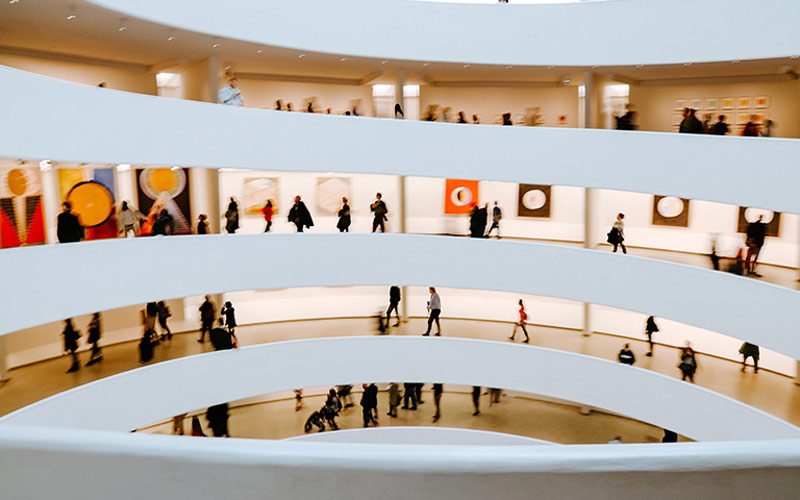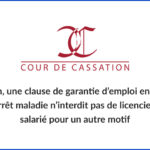By Rudy Lentini, counsel, Alice Boselli and Anahit Zakaryan, articling students
No prescription for the restitution of works of art looted during the Second World War
On January 20, 2023, a lawsuit was filed in Manhattan Supreme Court against the famous Guggenheim Museum in New York. The heirs of a German-Jewish collector are seeking the return of a Picasso masterpiece or $100-200 million in damages, citing a forced sale in October 1938. In the United States, the Holocaust Expropriated Art Recovery Act (HEAR Act) of 2016 allows victims of the Holocaust and their heirs to request the restitution of works of art illegally sold or extorted during Nazi Germany within six years of discovering the whereabouts of the work.
Would such a request for restitution be possible in France?
Yes ! Of course, in France, the rules determining the deadlines beyond which it is no longer possible to initiate legal action are quite strict. However, taking into account France's commitment to do justice and to contribute to the memory of the victims of the spoliations carried out during the Second World War, several remedies have been put in place allowing the restitution of spoliated cultural property to the heirs of the victims.
In this respect, certain institutions affiliated with the Ministry of Culture play an important role in enabling the heirs of the natural and legal persons spoliated to obtain, through the archives, information on the circumstances of the spoliation or on the current situation of the GOOD.
Thus, if the spoliation of cultural property occurred in France during the period of occupation (June 1940 - end of 1944) and the work has not been located, the successors of a victim of spoliation can submit a file to the Research and restitution mission for cultural property looted between 1933 and 1945 (M2RS) and/or with the Commission for the compensation of victims of spoliation (CIVS). These organizations will then research the current status of the artwork.
Once the property has been located, with the help of the M2RS, the CIVS or by the assigns themselves, the request for restitution of the work will then depend on its status:
- Is it the property of a private person or organization?
- Is it kept in a public museum under the status of MNR work, National Museums Recovery, or in a public library?
- Is it part of the public collections of a museum or library?
If the spoliated work is the property of a person or a private body, only the judicial judge can order restitution.
Ordinance No. 45-770 of April 21, 1945 provides for the nullity of any act of spoliation committed in France by the occupier or by the Vichy regime. The request for nullity of the act is formulated by the beneficiaries of the victims, against the current owner of the work before the President of the judicial court. The choice of jurisdiction territorially seized will be left to the plaintiff, who may for example seize the jurisdiction of the place where the claimed work is located. Thus, if the judge grants the request for nullity, the immediate restitution of the works will then be ordered (article 17 of the order). The purchaser or successive purchasers will be considered as possessors in bad faith with regard to the dispossessed owner and may not claim any right of retention (article 4 of the order). According to article 21 of the ordinance, the request for nullity is no longer admissible since January 1, 1952. Thus, for his request to be admissible, the dispossessed owner must provide proof that he found himself, even without force majeure, in the material impossibility of acting before December 31, 1951. This provision then allows successors to act without prescription being an obstacle. On this point, the Paris Court of Appeal, in a judgment of September 30, 2020, considered that with regard to the dispersal of the family in a context of war and the confiscations that took place, the fact of not having been able to knowing exactly the fate of all the property that has been the subject of spoliation can serve as a basis for relieving plaintiffs of foreclosure. The Court of Appeal also qualified the will of the plaintiffs to settle the conflict amicably as a manifestation of the material impossibility to act within the time limits mentioned above.
It is thus in this same decision that the Paris Court of Appeal noted " that it follows from all of these elements the existence of precise, serious and concordant indications that the painting kept at the Cantini museum under the number C87.50 "Pinède, Cassis" is indeed a looted painting of whichthe sale, which took place between 1940 and 1942, is void and which must be returned by the city of Marseille, [to] the sub-purchaser, [the] consorts A (Court of Appeal of Paris, September 30, 2020, n°19/18087). The French State and the city of Marseille were therefore ordered to return 3 paintings to the successors of the owners.
If the spoliated work is held under the status of MNR (National Recovery Museums) work, restitution takes place by administrative means, including before the administrative court.
The main characteristic of the MNR inventoried works is that they are entrusted to the temporary custody of national museums and certain regional museums without belonging to the heritage of the State. These are works that were brought from Germany to France, because certain clues suggested that they came from French collections, and whose owners were not known.
For these works, restitution may be ordered by the Prime Minister, on the recommendation of the CIVS or on the proposal of the Ministry of Culture. If the CIVS has not been contacted, the request for restitution must be made directly to the Ministry of Foreign Affairs. If the Prime Minister refuses to follow the recommendation of the CIVS or if the Ministry of Foreign Affairs does not grant the request, an action may be brought by the successors in cause against the State, before the administrative court. Like the appeal before the court, the successors will have to prove that they are the owners of the work whose restitution is requested.
Works of art, belonging to public collections, inalienable and imprescriptible, can only be returned on the initiative of the State by adoption of a law.
Finally, if the property is part of the public collections of a museum, therestitution will be organized on the initiative of the State through the adoption of a law. On February 21, 2022, law n°2022-218 “relating to the restitution or return of certain cultural property to the heirs of their owners who are victims of anti-Semitic persecution” has been enacted. Fifteen works, including Gustav Klimt's "Roses under the Trees", kept at the Musée d'Orsay, have been returned. The Minister of Culture Mrs. Rima Abdul Malak also announced during an interview with the newspaper Le Monde on January 15, 16 that three framework laws aimed at facilitating the restitution of foreign cultural property, human remains and works looted by the Nazis will be presented to Parliament during 2023.
To be continued ...

Rudy Lentini
Counsel
Rudy Lentini regularly defends the firm's clients in complex disputes with their strategic service providers.
He is also developing expertise in disputes relating to works of art.





